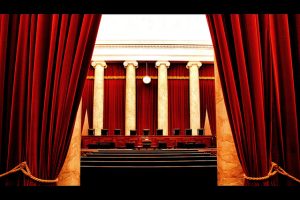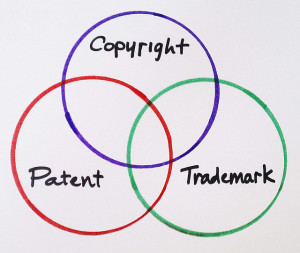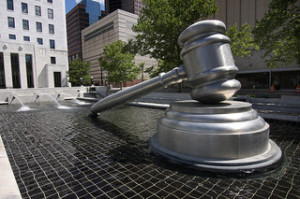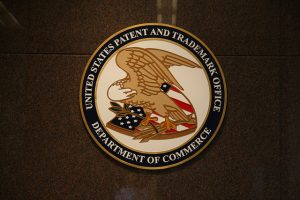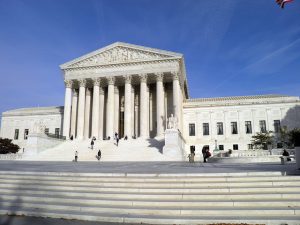
Image Courtesy of Mike M.S.
The Stern v. Marshall Decision. In its 2011 decision in Stern v. Marshall, decided by a 5-4 vote, the U.S. Supreme Court held that even though Congress designated certain state law counterclaims as “core” proceedings, Article III of the U.S. Constitution prohibits bankruptcy courts from finally adjudicating those claims. Stern v. Marshall left a number of questions unanswered, including the following:
- Is a fraudulent conveyance claim under state law or the Bankruptcy Code a “Stern claim” for which a bankruptcy court is constitutionally prohibited from entering final judgment?;
- Can a bankruptcy court enter a final judgment on “Stern claims” with the parties’ consent?; and
- Can a bankruptcy court treat a “core” Stern claim as “non-core” under 28 U.S.C. Section 157 and follow the statutory procedures for submitting proposed findings of fact and conclusions of law to the district court for de novo review, even though there appears to be a gap in the statute and it does not expressly provide for that approach?
The Decision And Appeals Below. These issues were in play in cases around the country, including the Ninth Circuit’s decision in In re Bellingham, a case that involved a bankruptcy trustee’s fraudulent conveyance claims against Executive Benefits Insurance Agency (“EBIA”) and other defendants. The trustee ultimately filed a motion for summary judgment in the bankruptcy court, which granted judgment in favor the trustee, including on the fraudulent conveyance claims. EBIA appealed to the district court, which affirmed the bankruptcy court’s decision after a de novo review of the summary judgment ruling.
- EBIA appealed again to the Ninth Circuit and, after the Supreme Court’s Stern v. Marshall decision was issued, sought to dismiss its appeal, arguing that Article III did not permit the bankruptcy court to issue a final judgment on the fraudulent conveyance claims.
- The Ninth Circuit denied the motion, holding that although Article III did not permit a bankruptcy court to enter final judgment on a fraudulent conveyance claim against a noncreditor without consent of the parties, EBIA had impliedly consented to the bankruptcy court’s adjudication in the case.
- The Ninth Circuit also noted that the bankruptcy court’s judgment could be treated as its proposed findings of fact and conclusions of law under the “non-core” statutory scheme, subject to the de novo review given by the district court in the case.
When the Supreme Court granted review of the Ninth Circuit’s decision in Executive Benefits Insurance Agency v. Arkinson, many thought the Supreme Court’s decision would answer these questions. In fact, there was a palpable fear among bankruptcy professionals that the Supreme Court might hold consent of the parties to be insufficient to overcome Article III concerns, and further that the Supreme Court might limit bankruptcy court jurisdiction over fraudulent transfer claims and require their adjudication solely in the district court. Other commentators questioned whether a ruling could put the federal magistrate judges system at risk, since they too exercise jurisdiction to enter final judgments with the consent of the parties.
The Supreme Court’s Narrow Decision. However, in an unanimous 9-0 decision in Executive Benefits Insurance Agency v. Arkinson, issued on June 9, 2014 (follow link for copy of opinion), Justice Clarence Thomas, writing for the Supreme Court, reached the decision by addressing only the third question, the one involving statutory construction. In affirming the Ninth Circuit’s decision, the Supreme Court expressly “reserve[d] … for another day” a decision on the question of whether Article III permits a bankruptcy court to enter final judgment on a Stern claim with the consent of the parties. It also did not decide whether a fraudulent conveyance claim is actually a Stern claim, noting instead that because neither party contested that conclusion its opinion simply assumed, without deciding, that it was a Stern claim.
Here’s how the Supreme Court described its holding:
We hold today that when, under Stern’s reasoning, the Constitution does not permit a bankruptcy court to enter final judgment on a bankruptcy-related claim, the relevant statute nevertheless permits a bankruptcy court to issue proposed findings of fact and conclusions of law to be reviewed de novo by the district court. Because the District Court in this case conducted the de novo review that petitioner demands, we affirm the judgment of the Court of Appeals upholding the District Court’s decision.
It restated that decision another way later in the opinion:
As we explain in greater detail below, when a bankruptcy court is presented with such a claim, the proper course is to issue proposed findings of fact and conclusions of law. The district court will then review the claim de novo and enter judgment. This approach accords with the bankruptcy statute and does not implicate the constitutional defect identified by Stern.
The reason the Supreme Court held its approach “accords with the bankruptcy statute,” and there is no “statutory gap” is because 28 U.S.C. Section 157 has a severability provision:
The plain text of this severability provision closes the so-called “gap” created by Stern claims. When a court identifies a claim as a Stern claim, it has necessarily “held invalid” the “application” of §157(b)—i.e., the “core” label and its attendant procedures—to the litigant’s claim. Note following §151. In that circumstance, the statute instructs that “the remainder of th[e] Act . . . is not affected thereby.” Ibid. That remainder includes §157(c), which governs non-core proceedings. With the “core” category no longer available for the Stern claim at issue, we look to §157(c)(1) to determine whether the claim may be adjudicated as a non-core claim—specifically, whether it is “not a core proceeding” but is “otherwise related to a case under title 11.” If the claim satisfies the criteria of §157(c)(1), the bankruptcy court simply treats the claims as non-core: The bankruptcy court should hear the proceeding and submit proposed findings of fact and conclusions of law to the district court for de novo review and entry of judgment.
The Supreme Court also commented how it noted in Stern that its decision there had not meaningfully changed the division of labor between bankruptcy and district courts. Referring back to that point, the Supreme Court in Executive Benefits rejected EBIA’s argument that district courts are required to hear all Stern claims in the first instance, since such an approach would have dramatically altered the division of responsibility set by Congress.
The De Novo Review Solution. The Supreme Court did not have to reach the consent issue in this case because it concluded “that EBIA received the de novo review and entry of judgment to which it claims constitutional entitlement.” That happened when the district court on appeal reviewed de novo the bankruptcy court’s grant of summary judgment, and then the district court itself entered judgment for the trustee.
- The Supreme Court found that here appellate review alone provided sufficient de novo review to satisfy Article III because the bankruptcy court’s conclusions of law were reviewed de novo by the district court acting as an appellate court.
- A bankruptcy court decision to grant summary judgment on a Stern claim, at least if appealed and affirmed by a district court on appeal after a de novo review of the legal issues, should be constitutionally sufficient even without consent given Executive Benefits. However, parties and bankruptcy courts may be uncomfortable relying on that narrow ruling given the uncertainty of a how a particular litigation may proceed.
- Importantly, the Supreme Court did not hold that appellate review alone is sufficient de novo review of Stern claims in all procedural settings. Appellate courts typically review de novo only a bankruptcy court’s legal conclusions, not its findings of fact, which are entitled to greater deference on appeal. In contrast, the non-core procedure under 28 U.S.C. Section 157(c)(1), in which the bankruptcy court makes only proposed findings of fact and conclusions of law, requires the district court to engage in a full de novo review of both legal and factual issues.
Where Does This Leave The Consent Issue? By leaving for another day the consent question, and by assuming but not deciding whether fraudulent conveyance claims are Stern claims, the Supreme Court resolved the Executive Benefits case on the narrowest of grounds. As in Stern, the Supreme Court once again left bankruptcy courts and parties litigating these claims with important, unanswered questions.
- To address the consent issue, after Stern a number of bankruptcy courts adopted local rules and procedures to require parties either to make an affirmative decision indicating whether they consented to the bankruptcy court entering final judgment or implying such consent from the lack of a timely objection.
- Although the Supreme Court did not reach the consent issue in Executive Benefits, the decision may persuade bankruptcy courts to reconsider the focus on consent.
- The Supreme Court’s clear holding that there is no “statutory gap,” and its statement that bankruptcy courts “should” use the non-core procedure for Stern claims, may well lead bankruptcy courts to issue proposed findings of fact and conclusions of law on all Stern claims for de novo review by district courts.
- Although the report and recommendation approach adds another layer of delay and cost for parties, and places an additional burden on already overcrowded district courts, the Supreme Court has now gone on record calling this the “proper course” for Stern claims, while technically reserving the consent issue.
- Given this jurisprudence, more bankruptcy courts may conclude that the non-core approach is preferable to continuing down the unsettled consent path for Stern claims, although others may still test whether consent is sufficient.
Conclusion. Despite the fears of some, the Supreme Court’s decision did not take away the ability of bankruptcy courts to hear Stern claims in the first instance, reaffirming that they continue to have a role in the adjudication of these claims. While it remains to be seen how bankruptcy courts and parties will react, the Executive Benefits decision may increase the number of bankruptcy courts opting to issue reports and recommendations for de novo review by district courts, and fewer may continue to attempt to enter final judgments with consent of the parties. That said, the consent issue may yet have its day at the Supreme Court as other cases move through the bankruptcy system, so stay tuned.

